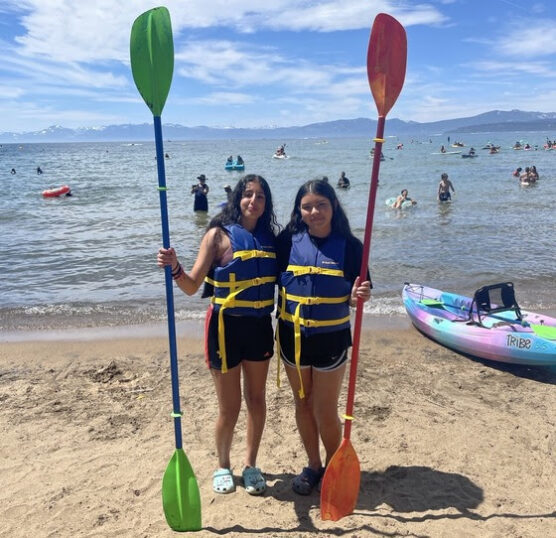This Fourth of July weekend California State Parks invites all Californians and visitors from around the world to celebrate the holiday in its parks and to recreate responsibly.
California’s diverse landscape provides recreational activities for everyone, from swimming in lakes, rivers and oceans to hiking among giant redwood or sequoia trees to off-highway vehicle riding in deserts and mountains to camping along the coastline. Following simple safety precautions, such as wearing a properly fitted life jacket or proper riding gear, avoiding alcohol, and knowing one’s limits while engaged in recreational activities, can help save lives.
With 280 state parks, California State Parks manages over 340 miles of coastline, 970 miles of lake and river frontage, and 5,200 miles of trails. There are plenty of outdoor opportunities to spend time with family and friends, reconnect with nature and enjoy the benefits state parks offer to your mental and physical health. But keep in mind, preparing for recreational activities should include simple precautions for safe recreation.
Helpful Tips
Wear a Life Jacket Around Water: Water-related accidents can happen suddenly and rapidly. Make sure you and those with you wear properly fitting, U.S. Coast Guard-approved life jackets, especially children. Wearing a life jacket is the best way to increase your chances of survival during an incident. View locations where public agencies and private organizations offer to loan life jackets to the public.
Prepare an Itinerary: No matter what type of recreational activity you are planning, leave an itinerary of your trip with a family member or friend with information such as the names and ages of all participants, your travel destination, and your expected return date. This will provide law enforcement personnel with essential information if an emergency response may be needed.
No Fireworks: As a reminder, all fireworks are not allowed in state parks.
Campfires: Never leave fire unattended and never leave children unattended around a fire. Always keep a shovel and bucket of water nearby at all times. Extinguish campfires completely before leaving your site.
Know Before You Go: Prior to leaving home, check the status of the state park you want to visit to find out what current restrictions and guidelines are in place. Have a back-up plan in case your destination is crowded. On arrival, park only in designated spaces.
Check the Weather
Plan activities based on temperatures throughout the day.
Dress in proper clothing for the activities you are planning.
Shield yourself from the sun with a hat, sunglasses, and sunscreen.
Drink plenty of water and avoid alcoholic and caffeinated fluids.
Protect Your Loved Ones
Always supervise children by appointing a designated “water watcher,” taking turns with other adults. Never assume someone is watching your children.
Know your limits. Swimming in a lake, ocean, or river is different than swimming in a pool. Waves, tides, strong rip currents, and other water hazards can appear quickly and provide little time to act.
If someone is in distress, seek help from a lifeguard or call 9-1-1 if one is not available.
Obey posted warnings and swim in designated areas or near a lifeguard tower, if available.
Avoid Alcohol: Operating a recreational vehicle, including a boat or an off-highway vehicle (OHV), with a blood alcohol concentration (BAC) of 0.08% or more is against the law. Impaired boaters can be arrested even with a lower BAC if the conditions are not safe and your boat can be impounded. Some parks do have alcohol bans. Check each specific park website to determine if there are local ordinances concerning alcohol.
Ocean Rip Currents: If you get caught in a rip current, stay calm and do not fight the current. Swim or float parallel to the shore until you are out of the current and then swim toward the shore.
Learn the Rules of Recreating in Boats and OHVs: There are laws specific to operating OHVs on public lands and boats on California’s waterways. Learn about these laws by visiting the webpage of your state park destination. For boating laws, please visit BoatCalifornia.com. OHV regulations are also available to review online.
Leave No Trace
Leave areas better than you find them by packing out all trash. Put food waste and other waste in the bags until it can be disposed of properly. For human waste, the use of waste alleviation (WAG) gel bags or other portable toilet options is recommended. WAG bags can be safely disposed of in regular trash receptacles. Do not disturb wildlife or plants.
Stay on Trails
Whether you are hiking, horseback riding, or operating an OHV, stay on designated trails. This includes boardwalks in sensitive ecological areas. You are not only protecting natural resources, but also ensuring you do not get lost. Check with State Park staff or volunteers about trails best suited for your abilities. Make sure to hike with a buddy.
You can find additional safety tips and information on backpacking, biking, camping, horseback trails and laws at parks.ca.gov/SafetyTips.
Like this:
Like Loading...
Related





 Tweet This
Tweet This Facebook
Facebook Digg This
Digg This Bookmark
Bookmark Stumble
Stumble RSS
RSS


























REAL NAMES ONLY: All posters must use their real individual or business name. This applies equally to Twitter account holders who use a nickname.
0 Comments
You can be the first one to leave a comment.